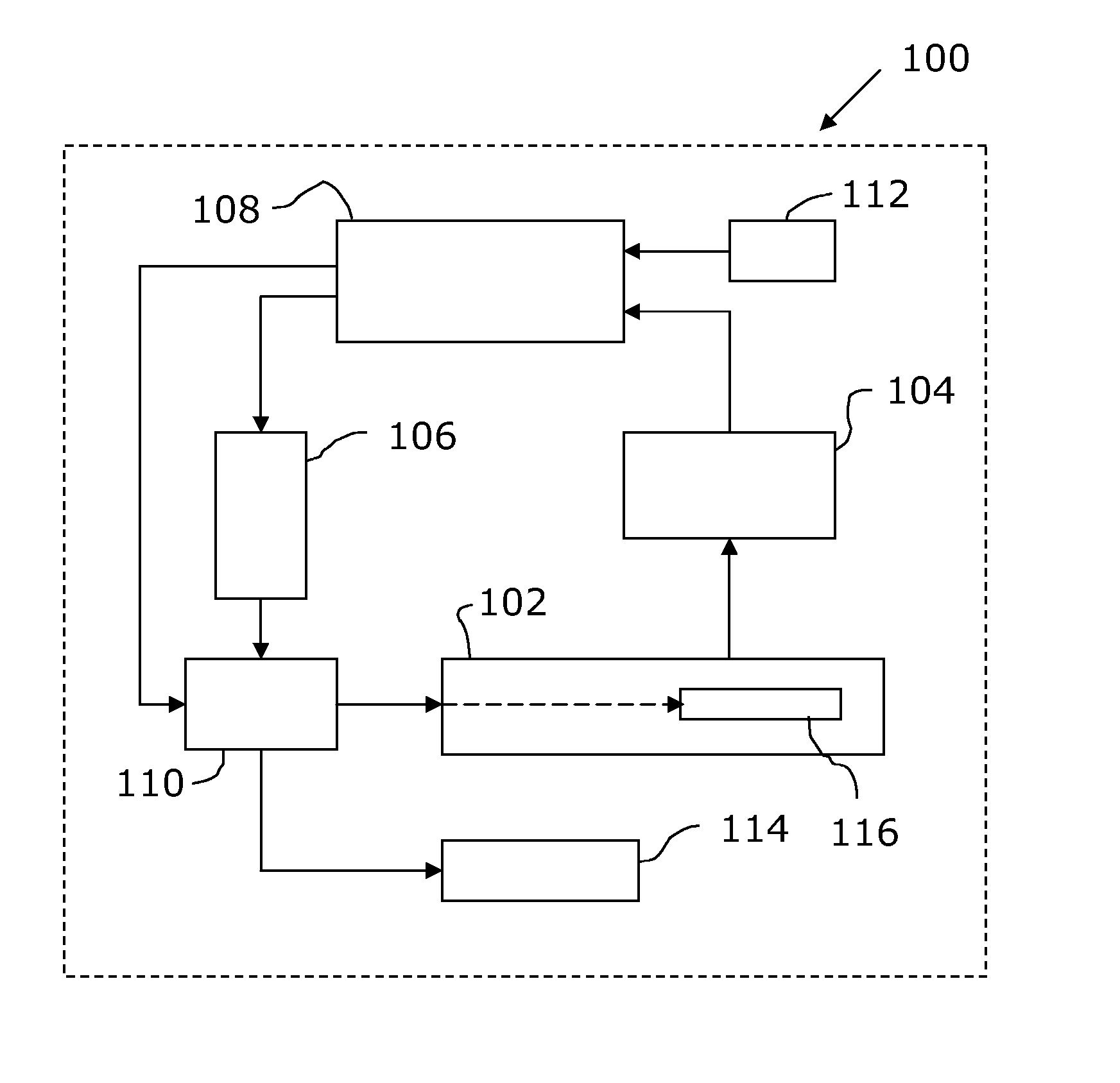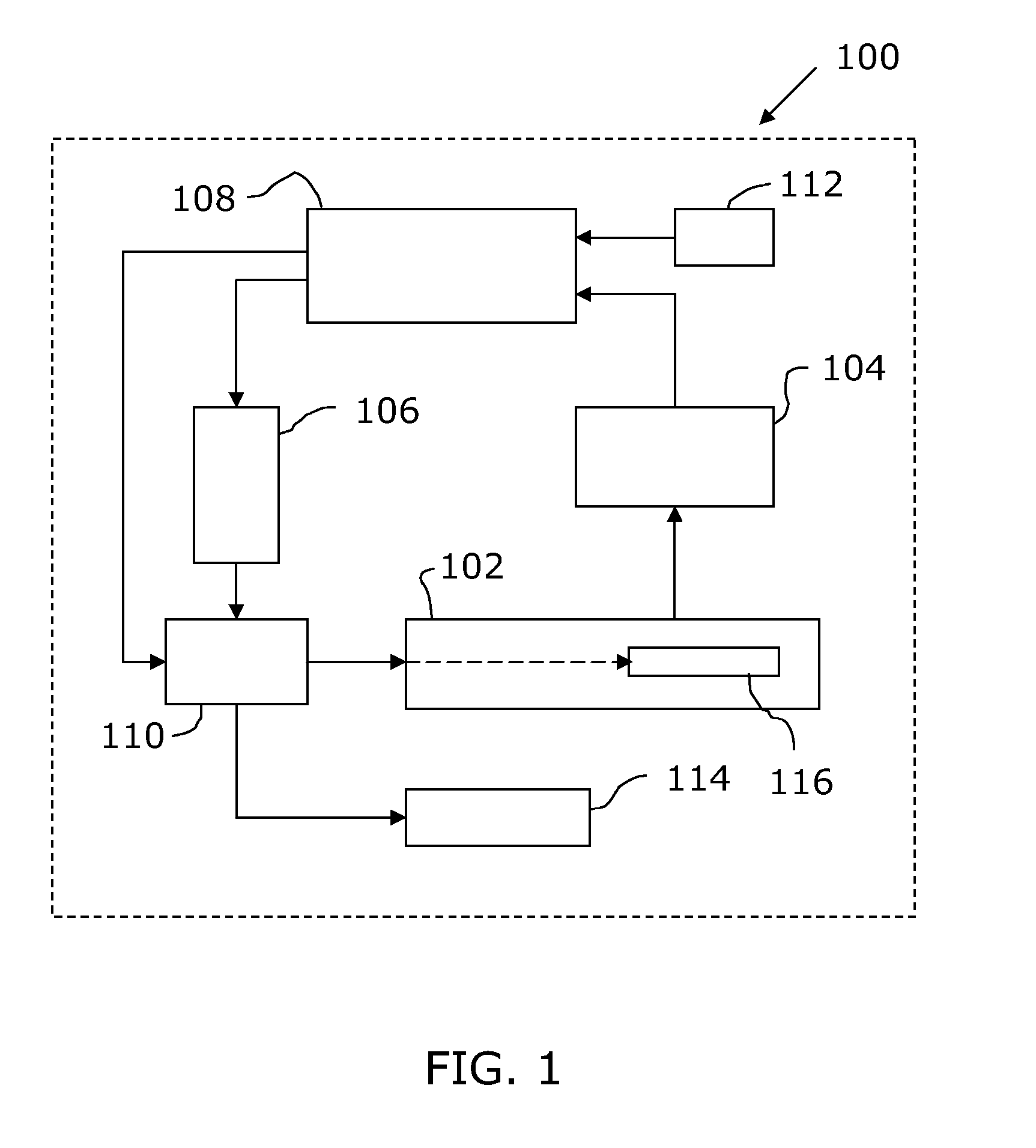For such cancer tumours, having an extension that typically is less than 10 mm,
conventional surgery may be seen as too coarse a method.
The goal of radical mastectomy is to remove all malignant tissue, which combined with
lymph node resection, often results in considerable hospitalisation.
The
high current density at the needle generates heat in the tissue, causing thermal destruction and / or denaturation of said tissue.
In addition, said techniques and methods may also touch or puncture local infections.
Upon penetration or contacting by the distal end of malignant tissue, said distal end becomes contaminated with non-healthy cells.
One disadvantageous property of this technique is that the delivered
radio frequency energy heats the tissue surrounding the track such that tissue of a relatively large depth is affected by the high temperature produced.
A potential
disadvantage of the technique of US 2004 / 0186422 A1 is associated with the application of the short bursts or continuous
radio frequency energy to substantially seal the track when the needle or instrument is being retracted.
Since the technique is operated manually and the needle is typically held and retracted by an operator, there is a risk that viable cells will remain in the track after the application of the
radio frequency energy when retracting the needle, since the result of treating the tract is dependent of the skill of the operator using this technique.
Another potential
disadvantage with the regime of US 2004 / 0186422 A1 is there is no solution to disruption of tumour cells when the inserted instrument penetrates through the tumour, potentially leading to seeding of tumour cells.
In addition, since the technique is operated manually, the technique is
time consuming in general and consumes time for an operator in particular, which are disadvantageous.
A clear disadvantage with the technique as disclosed by US 2003 / 0195500 is that this device uses
microwave frequency energy.
A consequence of using
microwave frequencies is that a comparatively large tissue region is heated, where said region also comprises
healthy tissue in no need of treatment, which clearly is non-beneficial.
Another disadvantage of the US 2003 / 0195500 technique is that coagulation of the entire track requires
multiple applications of micro-wave energy, where the delivery needle is rejected piece-wise, and where
microwave frequencies are applied to the delivery needle in between the rejections, due to the fact that each application of the microwave energy of the power being used to achieve the isotherms as mentioned above, lasts a relatively long time.
Moreover, manual operation of this regime brings the disadvantage of risking that viable cells remain in the track subsequent to the application of micro-wave energy, since the tissue surrounding the track is often non-homogenous and therefore require different applications of energy to ablate the track.
Yet another disadvantage is that
energy absorption upon application of
microwave frequency is often non-homogenous, which can result in spots being over-heated, so called “hot spots”.
By generating radio frequency energy, the cannula is heated above a critical temperature causing the tissue surrounding the cannula to become non-viable.
One drawback with the
biopsy needle technique as disclosed in U.S. Pat. No. 6,126,216 is the application of radio frequency energy which is applied to achieve elevated temperature in tissue of a depth of approximately 10
cell layers.
Using a low
current density however requires a long duration of application of the radio frequency energy, which for this reason is a clear drawback since the rise in temperature during that duration will be influenced by heat conduction to neighbouring tissues and thereby also by blood
perfusion and other tissue properties.
Another drawback of the technique as disclosed by U.S. Pat. No. 6,126,216 is the
skin burn effect that is caused due to the contact between the electrode and the
skin upon penetrating the
skin by the
biopsy needle, upon application of radio frequency energy to the
biopsy needle.
The usage of the entire shaft of the needle as an electrode thus results in undesired skin burn effects.
A potential drawback of the technique of U.S. Pat. No. 6,126,216 is that full penetration of a tumour by the electrode may result in dislocated viable tumour cells that could proliferate in
healthy tissue into new cancer tumours.
Conclusively, a common disadvantage of the prior art techniques and disclosures is that movement of inserted instruments in longitudinal directions may result in non-complete track tumour
cell killing.
In addition, continuous application of energy may result in an unnecessarily large
diameter of tissue killing that the sample in the needle is affected as well as an increased
operation time.
 Login to View More
Login to View More  Login to View More
Login to View More 

